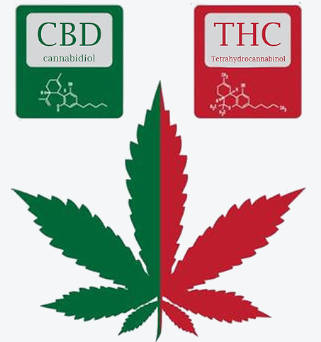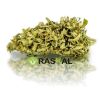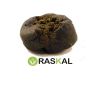
We are often asked about THC in blood tests? Before answering this question it is necessary to make some quarety on some points. THC is the acronym used to identify tetrahydrocannabinol (or tetracannabinol ), the most important molecule – together with CBD – of the phytocannabinoid family. They are compounds of natural origin found in cannabis plants. THC is best known to be the active ingredient that causes the psychoactive effects following the conspicuous consumption of substances such as marijuana and hashish. In fact, tetracannabinol is also widely used for the production of a series of specific drugs, in which the percentage of active ingredient does not exceed 5%, used in the treatment of some chronic or pathological conditions.
T>etracannabinol in the analyzes: what it means
One of the distinguishing features of THC is that it is a fat-soluble molecule. It tends to bind to fats (including the body). This prerogative has a significant impact on the disposal of the substance. Therefore it increases its permanence in the blood flow and the consequent traceability through special toxicological tests. In essence, following the consumption of a cannabis derivative with a high THC content, the 'traces' of the active ingredient remain found in the blood for a certain period of time. The actual permanence of THC in the blood depends on several factors, namely:
How to take the substance; tetracannabinol can be introduced into the body by ingestion, inhalation or by breathing in the vapours produced by the combustion of a cannabis derivative (inflorescences or resin);
Frequency and regularity of intake and consumption;
Amount of high THC cannabis consumed or consumed within a given period;
Individual metabolism.
To prolong the presence of tetracannabinol in the blood is also a phenomenon called "enterohepatic circulation". So a substance (especially drugs) after being absorbed by the body, passes from the liver to the intestine and then from these back to the liver. In this way, it increases the residence time of the drug inside the tissues, before it is excreted through the urine. This phenomenon also affects derivatives of THC metabolization: after being introduced into the body. At this point, the substance is broken down into metabolites: first 11-OH-THC (11-Hydroxy-THC), then THC-COOH (carboxy-THC) and finally THC-COOH-glucuronide. The latter, due to the action of some bacterial enzymes present in the intestine, is converted back into THC-COOH. After that it is introduced back into the bloodstream, dilating the residence time of the active ingredient in the body.
In general, THC in the blood is detectable for a period of between 24 and 48 hours in occasional users. In subjects who, on the other hand, make habitual use of substances rich in the active ingredient, THC is detectable in a period of time ranging from 5 days to two weeks.
Cannabis effects and trace THC
The THC molecules introduced into the body bind to cannabinoid receptors (CB1 and CB2). These receptors are mainly located in the central nervous system and in the immune system. For this reason, cannabis derivatives with a high tetracannabinol content have both physical and psychological effects. They therefore determine mnemonic and motor coordination difficulties, alteration of sensory perceptions, reduction of alertness, unmotivated happiness and euphoria and distortion of space-time perceptions. Of course, the extent and duration of these effects depend on the amount of substance consumed, the regularity of the consumption of high-THC cannabis derivatives as well as the personal tolerance or 'susceptibility' towards the active ingredient itself.
THC blood test: which ones are carried out
As reported on the official website of the Istituto Superiore di Sanita, "the analysis for the search for cannabinoids in the body, is carried out on urine, blood, saliva and hair and is generally required for clinical and / or medico-legal purposes". The urine test is carried out "to obtain indications of consumption" (the maximum limit allowed is 50ng of THC-COOH per ml) while a toxicological examination of the blood, following an intravenous sampling, serves to establish a "topical use", ie a relatively recent consumption. To determine a dating cannabis intake, however, a sample of "hair taken from the back of the head as close as possible to the scalp" is used.
How to eliminate Tetracannabinol from the body
It is possible to speed up the natural process of disposing of THC present in the blood. We now list a series of simple tricks. The first is, of course, the complete cessation of the intake of substances containing the active substance. In addition, here are a number of useful tips to lower the rate of THC in the bloodstream faster:
Drink plenty of water (at least two liters a day), in order to stimulate diuresis and promote the disposal of the substance present in the body. For this purpose, detoxifying drinks can also be used. It is good, however, not to take an excessive amount of fluids, which could invalidate the results and urine tests.
Increase physical activity. THC molecules, as mentioned, are fat-soluble and, consequently, bind to fat cells. Practicing sports regularly allows you to reduce fat mass and promote sweating. This will increase the disposal of tetracannabinol assimilated by the body.
Follow a healthy diet. A diet that guarantees a good supply of proteins and fibers, essential to help the body to dispose of the metabolites produced by the assimilation of THC faster.
Integrate charcoal into the diet; This substance is used as an adsorbent of toxins in cases of poisoning. In addition, it is able to bind to THC metabolites, so as to facilitate their disposal. Activated charcoal can be taken in capsules or through certain foods, such as black bread with charcoal.
Advantages of cannabis light
Unlike the common one, cannabis light is characterized by an extremely low THC rate (less than or equal to 0.5%, according to the regulations in force in Italy). Derivatives of this substance, such as marijuana or light hash, are considered harmless. Such a low concentration of active ingredient is not sufficient to trigger psychoactive or euphoric effects. At the same time, products obtained from cannabis light – such as those available in the online hemp store – offer several advantages over substances with a high THC content:
They do not cause psychotropic or sensory alterations;
They are not addictive or addictive;
They do not result in a prolonged presence of THC in the blood or urine;
- They have calming, relaxing, anti-fatigue and pain-relieving effects thanks to the high content of CBD (cannabidiol), another important phytocannabinoid present in cannabis.






